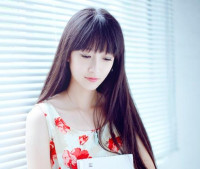Android 的Margin和Padding Layout_weight属性
来源:互联网 发布:js正则表达式 i 编辑:程序博客网 时间:2024/06/06 02:03
网上这个说得比较清楚:
首先看一下Layout_weight属性的作用:它是用来分配剩余空间的一个属性,你可以设置他的权重。
http://mobile.51cto.com/abased-375428.htm
值得注意的是,如果使用layout_weight的同时,还使用layout_height和layout_width关系属性,则有点混乱:layout_weight一般会覆盖layout_height和layout_width,但并非总是如此。与其去计算复杂的剩余空间分配。不如按照建议:
打算使用layout_weight 属性,设置相应的高度或宽度0DP。那这样,视图分配的大小将只由layout_weight控制。
RelativeLayout容器(安卓集装箱2:RelativeLayout)
参考:http://tigerwoods.tistory.com/11二。 RelativeLayout
窗口小部件RelativeLayout /容器的部件的相对位置是根据该方法测定的。
首先,一个父容器控件内部确定其性质的位置如下所示。

以上所有的特性都是真,假的输入值。
其次,相对于窗口小部件/容器位于相对于所述特性在使用过程如下。

最新的android:layout_alignBaseline基于文本的,比如标签和EditText上的字母的AIR插件matchuneunde有用的高度。
以上所有都是相对的属性窗口小部件/容器的基础上,应指定为id的值。
相对于标准的“@ ID /控件ID”小部件的id是确定的。
例如,一个部件一个是机器人:ID =“@ + ID / A”如果你有identiy XML中的控件A“@ ID / A”里面被调用。
部件部件B,则位于右侧的窗口小部件的A和B要指定用于对齐的下列属性。
<小部件的
......
机器人:ID =“@ + ID / A”/>
<B小工具
......
机器人:layout_alignRightOf =“@ ID / A”/>
如果部件是A,B被放置在下面的表格。
请注意,在RelativeLayout两点:
- XML布局文件进行解析从顶部标识为一个位于下方的XML munseosang部件位于小部件引用的id是不可能的底部顺序。 (尚未宣告为不能低于引用的变量。)
- 在所有比自己其他的相关属性和填充剩余空间时,只适用于小部件。
RelativeLayout例子(main.xml中)
结果如下。
layout、layout-land和layout-port的区别
一般把UI 布局文件放在layout文件夹下,如果要支持橫屏,就会取同名的layout放在layout-land文件夹下。
-res/layout-land 横屏 -res/layout-port 竖屏 -res/layout 默认
How to Support Multiple Screens
Provide different bitmap drawables for different screen densitiesThe configuration qualifiers you can use for density-specific resources are ldpi (low), mdpi (medium), hdpi(high), and xhdpi (extra high). For example, bitmaps for high-density screens should go in drawable-hdpi/.
参考:http://developer.android.com/guide/practices/screens_support.html
android:fillViewport
用法例子:http://qiansheep.blog.163.com/blog/static/3506872020129942029990/
当你想让一个高度值不足scrollview的子控件fillparent的时候,单独的定义 android:layout_height="fill_parent"是不起作用的,必须加上fillviewport属性,当子控件的高度值大于 scrollview的高度时,这个标签就没有任何意义了。
代码如下:
<?xml version="1.0" encoding="utf-8"?>
<!-- 背景:蓝色 -->
<ScrollView xmlns:android="http://schemas.android.com/apk/res/android"
android:id="@+id/scrollView1"
android:layout_width="fill_parent"
android:layout_height="fill_parent"
android:background="#0000ff" >
<!-- 背景:绿色 -->
<LinearLayout
android:id="@+id/linearLayout1"
android:layout_width="fill_parent"
android:layout_height="fill_parent"
android:background="#00ff00" >
<TextView
android:id="@+id/textView1"
android:layout_width="wrap_content"
android:layout_height="fill_parent"
android:layout_weight="1"
android:text="Hello Android." >
</TextView>
</LinearLayout>
</ScrollView>
效果图如下:

解决办法:
在ScrollView中添加一个android:fillViewport="true"属性就可以了。顾名思义,这个属性允许ScrollView中的组件去充满它。
修改后的效果图:

- Android 的Margin和Padding Layout_weight属性
- android:layout_weight padding margin 的使用
- Android 的Margin和Padding属性
- Android 的Margin和Padding属性
- Android margin 和 padding 属性
- android的布局属性中padding和margin的区别
- Android的布局属性中padding和margin的区别
- Android中控件的padding和margin属性的使用
- android布局之margin和padding属性
- android padding margin和html padding margin的区别
- css的padding和margin属性
- padding和margin的区别及其属性
- 属性padding和margin的区别
- Android Padding 和Margin
- android:padding和android:margin的区别
- android:padding和android:margin的区别
- android:padding和android:margin的区别
- android:padding和android:margin的区别
- java.lang.RuntimeException: Can't create handler inside thread that has not called Looper.prepare()
- 黑马程序员--Java基础--04面向对象(2)
- mysql指令
- android 模拟IR(续一)---内核
- 小议游戏服务器的消息组包
- Android 的Margin和Padding Layout_weight属性
- ORACLE数据库:ORA-28000:the account is locked
- JS日期格式判断
- Java设计模式学习(一)
- iOS开发中 workspace 与 static lib 工程的联合使用
- LINUX下搭建FTP服务器
- Log4Net使用指南
- 关于IOS7中scrollview中subviews的frame看起不正确的问题
- c++的构造函数




